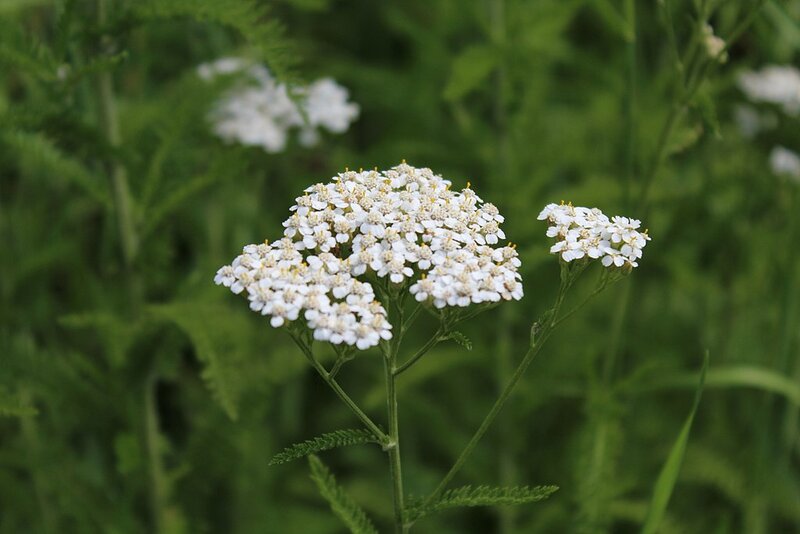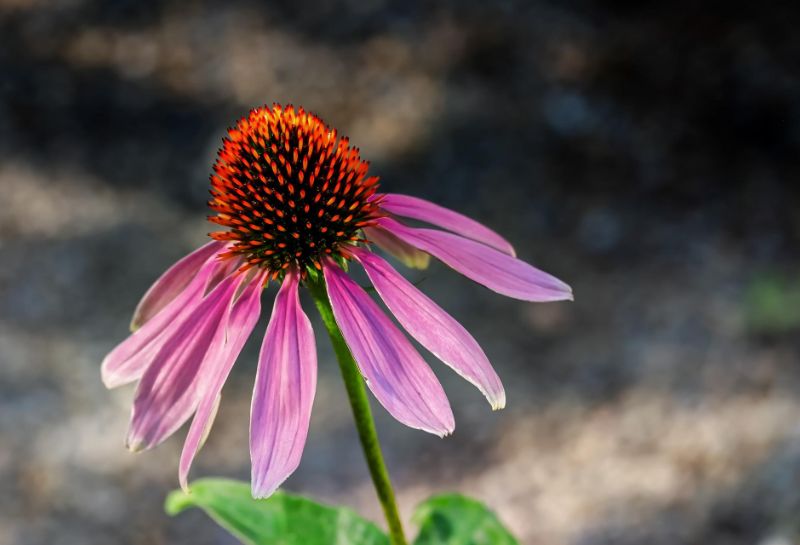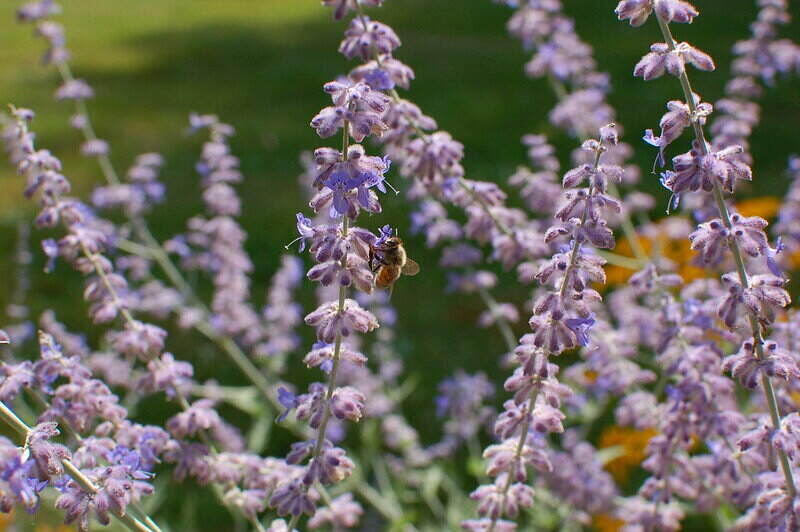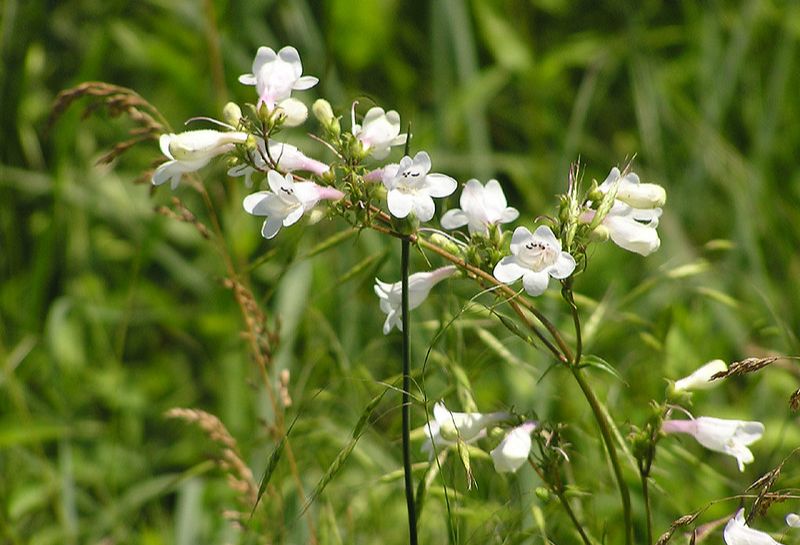
Living in a warm, dry climate has many health benefits, including a stronger immune system, better mental health, and lower risk of heart disease. However, not everything thrives in the vitamin D-rich sunshine, including plants. For a healthy, low-water landscape in an arid climate, you need drought-tolerant plants. Here are the 11 best drought-tolerant perennials for your yard.
- 11 best drought-tolerant perennials
- 1. Yarrow (Achillea millefolium)
- 2. English lavender (Lavandula angustifolia)
- 3. Carpet sedum (Sedum lineare)
- 4. Purple coneflower (Echinacea purpurea)
- 5. Crimson bottlebrush (Callistemon citrinus)
- 6. Russian sage (Salvia yangii, formerly Perovskia atriplicifolia)
- 7. Foxglove beardtongue (Penstemon digitalis)
- 8. Blanket flower (Gaillardia grandiflora)
- 9. Southernwood (Artemisia abrotanum)
- 10. Butterfly weed (Asclepias tuberosa)
- 11. Globe thistle (Echinops ritro)
- What makes a plant drought-tolerant?
- How to water new drought-tolerant perennials
- How to care for drought-tolerant perennials
- FAQ about drought-tolerant perennials
11 best drought-tolerant perennials
You can have a healthy, robust garden in nearly every climate, including a dry one, as long as you choose the right plants. For your arid climate garden and landscape, choose plants with little water needs. While there are many dry-climate plants available, using perennials means you won’t have to spend hours in the garden every spring.
Perennial plants persevere for many growing seasons. With deciduous perennials, the above-ground part of the plant (stems, leaves, flowers) goes dormant with the frost and resprouts again in the spring. Evergreen perennials keep their leaves year-round. In contrast, annuals complete their lifecycle in one growing season and won’t return in the spring.
Here are 11 of the best drought-tolerant perennials.
1. Yarrow (Achillea millefolium)

For homeowners looking for heavy-duty drought tolerance, yarrow is a no-brainer. With soft, feathery leaves and umbrella-like clusters of pink, yellow, and white flowers, this summer bloomer grows in drought-prone areas. Their flowers are cut for bouquets and dried arrangements. Yarrow repels deer and attracts beneficial insects that feed on pest insects like slugs.
Yarrow spreads rapidly to form a dense green mat, so it’s perfect as a border plant near your home foundation or as an addition to a wildflower meadow, rain garden, or pollinator garden. It’s an essential foraging source for native bees.
Plant type: Upright flower
Hardiness zones: 3-9
Sun exposure: Full sun
Soil needs: Sandy, loamy, well-draining
Mature height: 1-3 feet
2. English lavender (Lavandula angustifolia)

Native to the Mediterranean, English lavender is a dwarf, evergreen shrub that handles drought and prefers dry soil to “wet feet” (soggy roots). With tiny trumpet-shaped purple flowers that bloom in summer, lavender is like catnip to butterflies and bees. It’s edible for humans, too, and used in cookies, teas, and fish and poultry seasonings.
This flowering plant is a gorgeous, aromatic addition to pollinator gardens, rock gardens, cut flower gardens, and sensory gardens. To promote new growth, remove flowers as they fade and prune your lavender in early spring and late summer after the final bloom.
Plant type: Low shrub
Hardiness zones: 5-9
Sun exposure: Full sun, can tolerate partial shade
Soil needs: Sandy, rocky; neutral to basic pH; well-draining
Mature height: 1-3 feet
3. Carpet sedum (Sedum lineare)

Carpet sedum is an easy-care groundcover similar to grass. While turfgrass requires mowing, frequent watering, and bucketloads of fertilizer, carpet sedum is a heat-resistant evergreen succulent that thrives in poor soil and requires little maintenance. It’s a pollinator magnet, attracting butterflies and bees but deters deer, rabbits, and other pests.
With tiny light green leaves and star-shaped yellow flowers that bloom in spring, carpet sedum (also called stonecrop) spreads across your garden to form a dense mat. Trim your sedum in spring if it’s encroaching on other plants.
Plant type: Groundcover
Hardiness zones: 6-9
Sun exposure: Full sun, tolerates some shade
Soil needs: Loamy, sandy, rocky; well-draining
Mature height: 4-6 inches
4. Purple coneflower (Echinacea purpurea)

With a charming, whimsical appeal, purple coneflowers have lavender petals encircling big, prickly centers that resemble tiny hedgehogs (Echinacea is derived from the Greek echinos, meaning “hedgehog”). Flowers begin blooming in mid-summer and continue until the first frost.
Feel a cold coming on? Purple coneflowers are the perfect immune system booster. The echinaceas’ flowers, leaves, and roots have long been boiled to make healing herbal teas and extracts. Some research even shows that echinacea reduces the odds of getting a cold by 58% and shortens the length of a cold by 1.4 days.
Plant type: Upright flower
Hardiness zones: 3-8
Sun exposure: Full sun, partial shade
Soil needs: Sandy, loamy, or clay; well-draining
Mature height: 2-5 feet
5. Crimson bottlebrush (Callistemon citrinus)

If you live on the coast and have salty soil, a crimson bottlebrush is perfect for you. With distinctive crimson flower spikes that resemble a bottlebrush or scrubber, this hummingbird-friendly evergreen is an ideal hedge, wall cover, or specimen tree. This low-maintenance plant has fragrant lemon-scented leaves that attract butterflies but resist pests.
Crimson bottlebrushes thrive in warm, sunny regions of the country, and if you live in a frost-free environment, flowers will bloom throughout the year. If you live in a cooler environment, consider growing a small bottlebrush variety (like the “Little John Dwarf” cultivar) in a container garden to give your patio or balcony a pop of color.
Plant type: Shrub or small tree
Hardiness zones: 8-11
Sun exposure: Full sun
Soil needs: Sandy, loamy, clay; slightly acidic; well-draining
Mature height: 10-15 feet as a shrub; can be trained as a tree to grow up to 25 feet tall
6. Russian sage (Salvia yangii, formerly Perovskia atriplicifolia)

With striking lavender-blue flowers and aromatic leaves, Russian sage is a member of the mint family. This long-blooming upright shrub adds vertical appeal to cottage gardens and borders. (It even won Perennial Plant of the Year!) With a slightly spicy flavor, they’re perfect for digestion-easing tea and gorgeous garnishes. Just don’t eat them, as they’re slightly toxic.
Russian sage blooms in summer, and stems can be cut back in early spring to promote strong seasonal growth. Young Russian sage stalks may flop over, so it’s a good idea to stake them or plant them near tall plants that can be used for support.
Plant type: Shrub
Hardiness zones: 3-9
Sun exposure: Full sun
Soil needs: Well-draining
Mature height: 3-4 feet
7. Foxglove beardtongue (Penstemon digitalis)

With tall stems, glossy green leaves, and long glove finger-like flower clusters, foxglove beardtongues are a neighborhood showstopper. Beardtongues bloom for a month in late spring to early summer before the stalks turn brown and develop seed pods. Beardtongues produce many seeds and grow quickly, so weed out unwanted stalks, or they’ll overtake your garden.
Foxglove beardtongues attract butterflies and hummingbirds and are perfect for cutting gardens. Grow beardtongues as a border around your mailbox, in a rain garden, or as an accent in a native garden. Beardtongues are highly adaptable to different soil types, but don’t plant them in wet, poorly draining clay: It’s a recipe for root rot.
Plant type: Upright flower
Hardiness zones: 3-8
Sun exposure: Full sun
Soil needs: Well-draining
Mature height: 3-5 feet
8. Blanket flower (Gaillardia grandiflora)

Blanket flowers will “blanket” your garden in vibrant, multicolored blossoms that resemble large daisies. These slow-growing stunners will draw bees, butterflies, and birds (especially goldfinches). Plant blanket flowers in your cottage garden, rock garden, cutting garden, or around perennial borders for color that will last all summer.
A member of the sunflower family, blanket flowers bloom prolifically from late spring to early fall. All that blooming energy can induce burnout, so some blanket flowers may only live for two years — but don’t fret. As long as you don’t deadhead your flowers, they will self-seed. Cut your blanket flowers back to 6 inches in late summer to ensure winter survival.
Plant type: Clumping flower
Hardiness zones: 3-10
Sun exposure: Full sun, partial shade (may grow floppy in partial shade)
Soil needs: Sandy or loamy (cannot tolerate clay); well-draining
Mature height: 1-3 feet
9. Southernwood (Artemisia abrotanum)

Also known as “lad’s love” or “old man,” southernwood is drought-tolerant and an excellent companion plant with lavender and rosemary. Southernwood’s feathery, silvery light-green foliage and upright clumping habit make it the perfect accent for pathways and rock gardens.
Here’s a fun fact: Southernwood is the key ingredient in absinthe. Moreover, its fragrant leaves are often dried to use in potpourris and air-freshening sachets. For best-growing results, sow seeds in spring and cut back your plants in the fall. Divide clumping shrubs every three to four years to stimulate growth.
Plant type: Shrub-like herb
Hardiness zones: 4-8
Sun exposure: Full sun
Soil needs: Loamy, sandy, rocky; well-draining
Mature height: 2-4 feet
10. Butterfly weed (Asclepias tuberosa)

As the name suggests, butterfly weed helps the endangered monarch butterfly population. Bonus: it also attracts bees but resists deer. While it takes two to three years to establish, the splash of vibrant orange flowers is worth the wait, and the plant grows denser each year.
Delicate deep green leaves complement flat-topped clusters of bright flowers that bloom through summer. When fall comes, you can leave the seed pods on the plant to burst open for strong spring growth or remove the pods to prevent butterfly weed from spreading to other areas of your garden.
Plant type: Upright flower or small bush
Hardiness zones: 3-9
Sun exposure: Full sun
Soil needs: Prefers sandy or loamy soil but can tolerate clay; well-draining
Mature height: 1-2.5 feet
11. Globe thistle (Echinops ritro)

With ice-blue spherical flower heads and tall upright stems, globe thistle adds vertical appeal to cottage gardens, pollinator gardens, and borders. While butterflies, bees, and ladybugs go wild for it, deer and rabbits won’t touch it. Globe thistle has attractive, spiny silver leaves that complement vibrant flowers that bloom in mid-summer through early fall.
Globe thistle is adaptable to different soil types, prefers low nutrient levels, and is low maintenance. But make sure your soil is well-draining as it’s prone to root rot.
Fun fact: The purple coneflower and globe thistle’s scientific Greek names (echinacea and echinops) are similar because they were both named for their hedgehog-like appearances.
Plant type: Upright flower
Hardiness zones: 2-8
Sun exposure: Full sun
Soil needs: Sandy, loamy, clay, or rocky; well-draining
Mature height: 2-4 feet
What makes a plant drought-tolerant?
Drought-tolerant plant species are native to drought-prone areas like California, Utah, Texas, and Arizona. They have adapted through the years to withstand harsh drought conditions. But how can they survive the arid climates? What makes plants drought tolerant? Drought-tolerant plants use three major strategies to survive in dry conditions.
- Drought avoidance: To prevent complete dehydration, plants use tactics like closing their stomata (leaf pores) during the day and opening them at night to collect the carbon dioxide they need to photosynthesize. Others begin growing in early spring and drop their leaves by summer to conserve energy during peak drought season.
- Desiccation tolerance: Desiccation means to dry out fully, but when a plant fully dries out, it dies. Highly desiccation-tolerant plants can survive extreme water loss, stop growing, and turn brown when their water levels get too low. But once you water them, they perk up and turn green, which has given them the nickname of “resurrection plants.”
- Drought tolerance: Some plants have structures to tolerate drought better than other plants. Some examples include:
- Small, thin leaves reduce the surface area, limiting water loss
- Deep roots help plants “root out” water locked deep in the soil
- Thick, waxy leaves prevent evaporation and reflect heat
- Hairy leaves protect the leaf surface from direct contact with hot, dry air.
How to water new drought-tolerant perennials
Once your new seeds or plants are in the ground, the first order of business is to water them. After root systems are established, your plants won’t need supplemental water, but even the strongest perennials need H2O to start growing and acclimate to their environment.
Your specific watering schedule will depend on your plant types, but here are general guidelines for watering your new drought-tolerant perennials:
| Time since planting | Watering frequency |
| First week | Daily |
| First year | 2-3 times per week (depending on rainfall) |
| Second year | Once a week |
| Third year and beyond | None, except in extreme drought |
Pro Tip: After the first week, encourage deep roots by letting the top 1-2 inches of soil dry out before watering again.
It’s a long road to plant establishment, but you’ll reap the rewards in year three when you can put the hose away and rely on the sky to give your plants all they need.
How to care for drought-tolerant perennials
Drought-tolerant perennials are much lower maintenance than other plants, but giving them some routine TLC is important. Remember, a healthy plant is always more likely to survive a drought than a plant already suffering from disease.
Here’s how to keep your perennials in peak condition:
- Prune and trim: Remove diseased branches and cut back plants that are getting too close to their neighbors.
- Hold off on mulch: An annual dose of moist, nutrient-rich organic mulch makes most plants jump for joy, but many drought-tolerant plants prefer low nutrient levels and little moisture. Check on your specific plant’s needs before you bring out the compost.
- Water deeply when needed: When a major drought hits, your plants may need supplemental water (depending on your chosen species). Give your plants a deep watering to soak down to the roots.
FAQ about drought-tolerant perennials
What’s the difference between “drought tolerant” and “drought resistant?”
The difference between drought-tolerant and drought-resistance comes down to hardiness. Drought-tolerant plants are slightly less hardy than drought-resistant plants. While drought-resistant plants can tolerate long periods of drought with no supplemental water, drought-tolerant plants need supplemental water if a drought extends more than a few weeks.
The terms are often used interchangeably, but it’s important to know the difference because you want tough growers that will thrive in your drought-prone yard.
Are there other drought-tolerant perennials I can grow?
Absolutely! These 11 drought-tolerant beauties are just the start of the perennial story. To add more color and texture to your drought-prone lawn, also consider planting:
- Adam’s needle (Yucca filamentosa)
- Black-eyed Susan (Rudbeckia spp.)
- Catmint (Nepeta faassenii)
- Cheddar pink (Dianthus gratianopolitanus)
- Agastache, also known as hummingbird mint (Hyssop)
- Cushion spurge (Euphorbia polychroma)
- Thyme (Thymus spp.)
- Daylily (Hemerocallis spp.)
- Tickseed (Coreopsis spp.)
- Snow-in-summer (Cerastium tomentosum)
For more drought-tolerant plant ideas, consider drought-tolerant trees and drought-tolerant shrubs.
Where can I plant drought-tolerant plants?
There’s no shortage of inspiration when it comes to drought-tolerant landscaping. Here are a few ideas for where to plant your drought-tolerant perennials:
- Build a rock garden and plant perennials to accent your favorite stones and boulders.
- Border your patio or fire pit with attractive groundcovers and flowers.
- Replace thirsty turfgrass with drought-tolerant native plants, rocks, and sand for a water-wise xeriscape. Xeriscaping helps preserve your city’s drinking water, so you may even be eligible for a city rebate (to know if your city gives rebates, visit your city water page, i.e., Albuquerque).
- Try a vertical gardening idea for your balcony. Show off drought-tolerant plants in baskets and hanging pots or on a trellis.
What should I watch out for to keep my drought-tolerant plants safe?
Root rot is the main danger for drought-tolerant plants. Poorly drained, clay-heavy soil can trap roots in a state of constant moisture, which causes roots to deteriorate and die.
Know the symptoms of root rot — slow growth, mushy stems, wilting or yellow leaves, rotten-smelling soil — and make sure you aren’t overwatering your plants. If your soil is wet and clay-heavy, choose plants that thrive in those conditions, like hostas and irises.
Design with drought-tolerant plants
Drought-tolerant plants lower your water bill, save you a lot of yard hassle, and mean your landscape won’t perish when droughts hit. If you’re ready to enjoy your own water-wise wonderland, start growing perennials in the spring or fall when the weather is cool enough for seeds and transplants to acclimate before the summer heat.
Ready to hop aboard the water-wise train with a rock garden or xeriscape? For major drought-tolerant landscaping projects, call a local garden pro to install perennials, trees, and hardscapes for you so you can skip the sweat and get right to the “low-maintenance” part of drought-tolerant landscaping.
Main Photo Credit: Lemanieh | Canva Pro | License